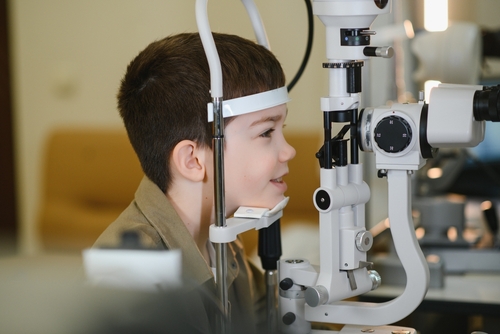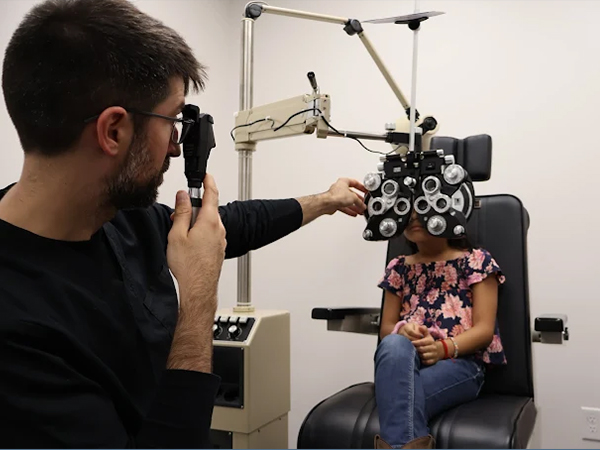Who Is Qualified to Provide Vision Therapy?

Why Only Optometrists Can Properly Diagnose and Treat Functional Vision Problems
If you’re exploring vision therapy for your child—or even for yourself—you may be wondering:
“Can an occupational therapist do vision therapy?”
“Does my ophthalmologist offer it?”
“Who’s really qualified to diagnose and treat visual dysfunctions?”
Let’s clear the air. The short answer:
The only professional trained, licensed, and legally authorized to diagnose visual dysfunctions and provide vision therapy is an optometrist, specifically, a doctor with advanced training in behavioral and developmental vision care.
What Vision Therapy Actually Is (and Isn’t)
Vision therapy is not just eye exercises. It’s not general sensory integration. And it’s definitely not something you can learn from a weekend workshop.
Vision therapy is a doctor-supervised, individualized program that retrains the brain and eyes to work together more efficiently. It targets specific visual deficits like:
Eye teaming (binocularity)
Tracking and saccadic movement
Accommodation (eye focusing)
Visual processing
Visual-motor integration
And critically, it often involves the prescription use of lenses and prisms—which are medical tools that can only be used by licensed optometrists or ophthalmologists.
Why Occupational Therapists Are Not Qualified
Occupational therapists (OTs) are valuable professionals who support many aspects of development, but when it comes to vision, there are serious limitations:
No formal training in optics or visual development
Cannot diagnose refractive errors or binocular vision dysfunctions
Cannot prescribe or use therapeutic lenses or prisms
Cannot rule out medical eye conditions like retinal or neurological problems
Cannot legally manage functional vision cases as primary providers
Some OTs offer “vision-like” activities, but these are not vision therapy in the clinical sense—and they can mislead families into thinking they’ve addressed the root visual issue, when they haven’t.
In fact, delaying proper care from an optometrist can mean a child continues to struggle unnecessarily.
Why Ophthalmologists Don’t Do Vision Therapy
It’s a fair question—ophthalmologists are doctors too, right? Yes. But they are medical and surgical eye doctors. Their training is focused on:
Diagnosing and treating eye diseases
Performing surgeries (e.g., cataracts, retinal repair, glaucoma)
Managing urgent medical conditions of the eye
They do not receive in-depth training in:
Functional vision development
Visual processing
Behavioral optics
Therapeutic neuro-visual rehabilitation
In fact, vision therapy doesn’t fit within the medical-surgical model that governs ophthalmology. Surgeons don’t do therapy. That’s not what they’re trained or licensed to do.
Optometrists: The Only Professional for Vision Therapy
Doctors of optometry are trained in:
Eye anatomy and physiology
Optics and visual perception
Binocular vision and neuro-visual development
Diagnosing both refractive and functional vision problems
Prescribing glasses, lenses, and therapeutic prisms
Designing and supervising customized therapy programs
And developmental or behavioral optometrists go even further, with postdoctoral education and clinical expertise in:
Pediatric vision development
Vision and learning
Visual rehabilitation after brain injuries
Cognitive neuroscience applied to the visual system
Only an optometrist can offer the full scope of what true vision therapy requires: clinical diagnosis, medical supervision, and integrated therapeutic treatment.
Why This Matters for Your Family
If your child is struggling with reading, coordination, attention, or visual comfort, you deserve answers that go beyond checklists and guesswork, and more importantly, you deserve care that addresses the root cause, not just the symptoms.
Vision therapy isn’t something to dabble in. It’s evidence-based, outcome-driven, and doctor-delivered. You wouldn’t go to a dentist for physical therapy—and you shouldn’t go to anyone but an optometrist for vision therapy.
The Bottom Line
Occupational therapists cannot diagnose or treat visual dysfunctions.
Ophthalmologists are surgeons, not vision therapists.
Optometrists are the only professionals trained and authorized to provide vision therapy.
If you're looking for real, lasting change, not just activity worksheets or symptom management, it starts with the right diagnosis and the right provider.


